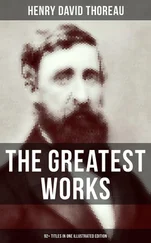"This must be the person little Mats promised to send me."
She was right, for it was Thumbietot come to talk to her about her father.
When he saw that she was not afraid of him, he told her in a few words where her father was and how to reach him.
While he was speaking, Osa, the goose girl, gradually regained consciousness; when he had finished she was wide awake.
Then she was so terrified at the thought of talking with an elf that she could not say thank you or anything else, but quickly shut the door.
As she did that she thought she saw an expression of pain flash across the elf's face, but she could not help what she did, for she was beside herself with fright. She crept into bed as quickly as she could and drew the covers over her head.
Although she was afraid of the elf, she had a feeling that he meant well by her. So the next day she made haste to do as he had told her.
Table of Contents
One afternoon in July it rained frightfully up around Lake Luossajaure. The Laplanders, who lived mostly in the open during the summer, had crawled under the tent and were squatting round the fire drinking coffee.
The new settlers on the east shore of the lake worked diligently to have their homes in readiness before the severe Arctic winter set in. They wondered at the Laplanders, who had lived in the far north for centuries without even thinking that better protection was needed against cold and storm than thin tent covering.
The Laplanders, on the other hand, wondered at the new settlers giving themselves so much needless, hard work, when nothing more was necessary to live comfortably than a few reindeer and a tent.
They only had to drive the poles into the ground and spread the covers over them, and their abodes were ready. They did not have to trouble themselves about decorating or furnishing. The principal thing was to scatter some spruce twigs on the floor, spread a few skins, and hang the big kettle, in which they cooked their reindeer meat, on a chain suspended from the top of the tent poles.
While the Laplanders were chatting over their coffee cups, a row boat coming from the Kiruna side pulled ashore at the Lapps' quarters.
A workman and a young girl, between thirteen and fourteen, stepped from the boat. The girl was Osa. The Lapp dogs bounded down to them, barking loudly, and a native poked his head out of the tent opening to see what was going on.
He was glad when he saw the workman, for he was a friend of the Laplanders—a kindly and sociable man, who could speak their native tongue. The Lapp called to him to crawl under the tent.
"You're just in time, Söderberg!" he said. "The coffee pot is on the fire. No one can do any work in this rain, so come in and tell us the news."
The workman went in, and, with much ado and amid a great deal of laughter and joking, places were made for Söderberg and Osa, though the tent was already crowded to the limit with natives. Osa understood none of the conversation. She sat dumb and looked in wonderment at the kettle and coffee pot; at the fire and smoke; at the Lapp men and Lapp women; at the children and dogs; the walls and floor; the coffee cups and tobacco pipes; the multi-coloured costumes and crude implements. All this was new to her.
Suddenly she lowered her glance, conscious that every one in the tent was looking at her. Söderberg must have said something about her, for now both Lapp men and Lapp women took the short pipes from their mouths and stared at her in open-eyed wonder and awe. The Laplander at her side patted her shoulder and nodded, saying in Swedish, "bra, bra!" (good, good!) A Lapp woman filled a cup to the brim with coffee and passed it under difficulties, while a Lapp boy, who was about her own age, wriggled and crawled between the squatters over to her.
Osa felt that Söderberg was telling the Laplanders that she had just buried her little brother, Mats. She wished he would find out about her father instead.
The elf had said that he lived with the Lapps, who camped west of Lake Luossajaure, and she had begged leave to ride up on a sand truck to seek him, as no regular passenger trains came so far. Both labourers and foremen had assisted her as best they could. An engineer had sent Söderberg across the lake with her, as he spoke Lappish. She had hoped to meet her father as soon as she arrived. Her glance wandered anxiously from face to face, but she saw only natives. Her father was not there.
She noticed that the Lapps and the Swede, Söderberg, grew more and more earnest as they talked among themselves. The Lapps shook their heads and tapped their foreheads, as if they were speaking of some one that was not quite right in his mind.
She became so uneasy that she could no longer endure the suspense and asked Söderberg what the Laplanders knew of her father.
"They say he has gone fishing," said the workman. "They're not sure that he can get back to the camp to-night; but as soon as the weather clears, one of them will go in search of him."
Thereupon he turned to the Lapps and went on talking to them. He did not wish to give Osa an opportunity to question him further about Jon Esserson.
Table of Contents
Ola Serka himself, who was the most distinguished man among the Lapps, had said that he would find Osa's father, but he appeared to be in no haste and sat huddled outside the tent, thinking of Jon Esserson and wondering how best to tell him of his daughter's arrival. It would require diplomacy in order that Jon Esserson might not become alarmed and flee. He was an odd sort of man who was afraid of children. He used to say that the sight of them made him so melancholy that he could not endure it.
While Ola Serka deliberated, Osa, the goose girl, and Aslak, the young Lapp boy who had stared so hard at her the night before, sat on the ground in front of the tent and chatted.
Aslak had been to school and could speak Swedish. He was telling Osa about the life of the "Saméfolk," assuring her that they fared better than other people.
Osa thought that they lived wretchedly, and told him so.
"You don't know what you are talking about!" said Aslak curtly. "Only stop with us a week and you shall see that we are the happiest people on earth."
"If I were to stop here a whole week, I should be choked by all the smoke in the tent," Osa retorted.
"Don't say that!" protested the boy. "You know nothing of us. Let me tell you something which will make you understand that the longer you stay with us the more contented you will become."
Thereupon Aslak began to tell Osa how a sickness called "The Black Plague" once raged throughout the land. He was not certain as to whether it had swept through the real "Saméland," where they now were, but in Jämtland it had raged so brutally that among the Saméfolk, who lived in the forests and mountains there, all had died except a boy of fifteen. Among the Swedes, who lived in the valleys, none was left but a girl, who was also fifteen years old.
The boy and girl separately tramped the desolate country all winter in search of other human beings. Finally, toward spring, the two met. Aslak continued: "The Swedish girl begged the Lapp boy to accompany her southward, where she could meet people of her own race. She did not wish to tarry longer in Jämtland, where there were only vacant homesteads. I'll take you wherever you wish to go,' said the boy, 'but not before winter. It's spring now, and my reindeer go westward toward the mountains. You know that we who are of the Saméfolk must go where our reindeer take us.' The Swedish girl was the daughter of wealthy parents. She was used to living under a roof, sleeping in a bed, and eating at a table. She had always despised the poor mountaineers and thought that those who lived under the open sky were most unfortunate; but she was afraid to return to her home, where there were none but the dead. 'At least let me go with you to the mountains,' she said to the boy, 'so that I sha'n't have to tramp about here all alone and never hear the sound of a human voice.'
Читать дальше












